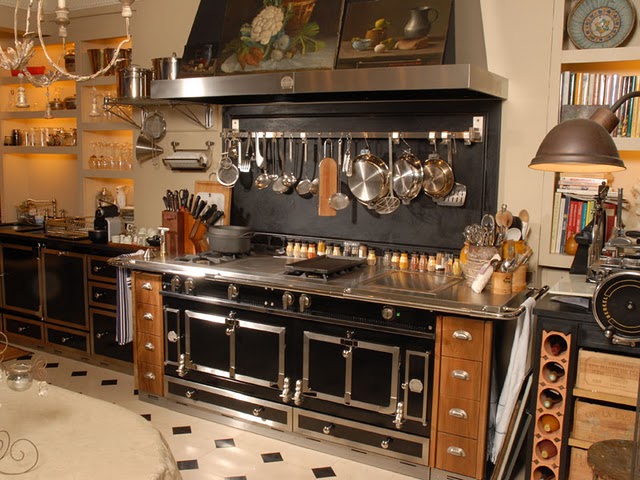My son asked me the other day (because I make my children critique my blog, and sometimes regret it),
"Where are you going with this, Mom? One blog is about kitchens, another about the Wyeths, and then kitchens again. Isn't your blog supposed to be all about kitchens? It's a bit confusing. You need a time line or something." If you too are confused, let me try to clarify - over thirty years, in both print magazines and online websites, I've observed kitchen design change. I've saved my favorites with piles of organized magazines and folders within folders on my computer. So, before dwelling only on "kitchens I have loved" today, I must dwell on "kitchens (and design) I have loved" yesterday because, darn it all, so many earlier kitchens were great kitchens and have molded kitchen design into what it is today.
So let's start today with two kitchens from Colonial Homes Winter 1978. Colonial Homes, now out of print, had a huge following in its heyday. Both kitchens here are reminiscent of the ones from my first two posts in that they both have fireplaces and are reminiscent of the Wyeth posts in that both contain antiques.
 |
 |
The next three images are from Early American Life, April 1985, and contain many more of the period antiques I love. The wing chair in the first image reminds me of some of the Belgian linen chairs of today (though I'm sure it was not linen in 1985), and the woodwork reminds me of the paneling in so many of the Wyeth interiors.
Love the fruit on the tables above and below. The bowl in the second image here is great, and I love the primitive portrait - not a Wyeth, but old. The fireplace could be straight out of a Wyeth interior.
Another image, another great bowl, a period highboy, a settle, a windsor chair, and another primitive portrait. So old New England.
Skipping way ahead now to a kitchen from Architectural Digest, June 2010, we see a combination of elements from the past and the present - old beams, an island countertop and flooring from reclaimed wood. Yet, what I love here is that these early elements are combined with today's stainless shelving, black iron pot rack, and new Viking stove. Also note the stone work surrounding the stove area. This kitchen really works today but contains some of the past.
The next kitchen from Southern Accents, July-August 2005, also demonstrates use of old with the new - brick flooring, old butcher block combined with Wolf stove from today and a wonderful knife block.
The kitchen below from House Beautiful, November 2010, combines a wall of reclaimed wood with a beautiful Le Cornue stove, red Kitchen Aid mixer and it works. Love the counter full of fresh broccoli and onion mounds.
And today's last kitchen from Traditional Homes, spring 1987 issue - "Colonial Warmth" is from a Greenwich Connecticut home. If you can enlarge the text from the article, I think it says everything I have been trying to say.
Hope you have enjoyed these kitchens, hope I have demystified the path I am taking. My next posting will again be about Wyeth country and its interior design. Can you tell this family and area impacted my taste?? Please be patient, hang with me, and I hope enjoy the journey.





















































